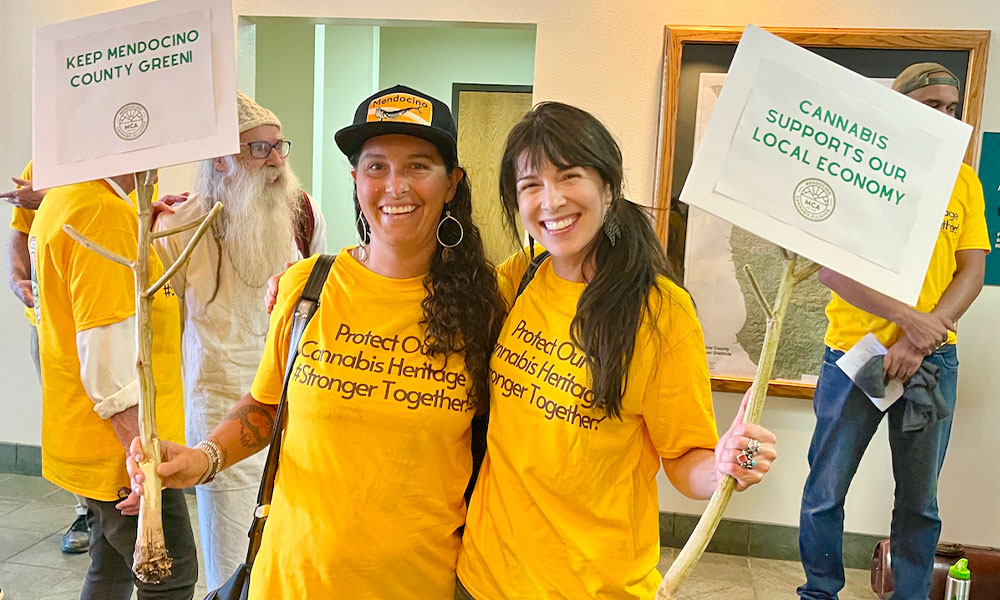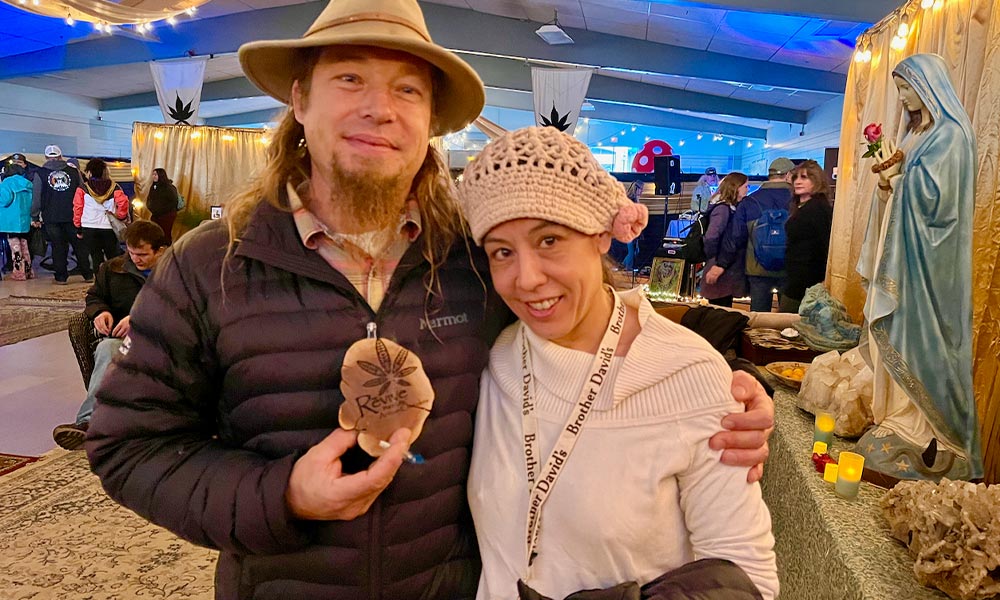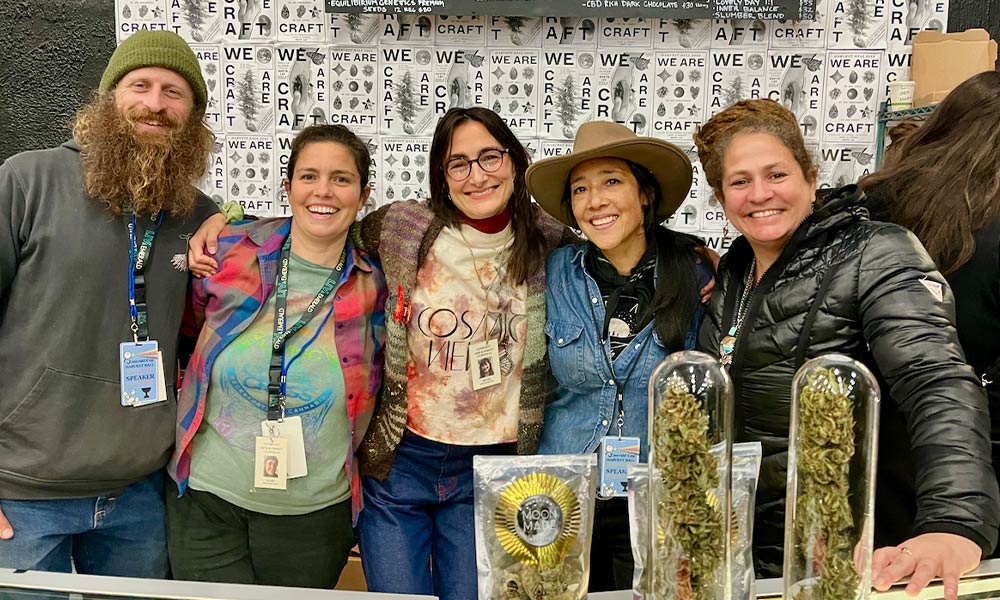
Joint Opinions
Surviving as a Craft Cannabis Farmer
In today’s market, small cannabis farmers must think outside the box if they want to have successful, lasting businesses. There are also ways consumers can help ensure this top-shelf product lives on.
The time for reckoning has come. The challenges have become huge in the California cannabis market for the small craft farmers, distributors and dispensaries. This current “extinction event” is the toughest one yet, and farmers and companies are dropping like flies. The prevailing question is: Who is actually making any money along this fragile supply chain? And it keeps going back to one place: the government.
The steep taxes imposed on all segments of the chain are wiping companies out, while the state-reported revenue for the first quarter of 2022 at $294.5 million, including $152 million in cannabis excise tax, $36.3 million in cultivation tax and $106.2 million in sales tax. Granted, the farmers are no longer being charged cultivation tax for the time being, yet dispensaries are using that as an excuse to pay the farmers less for their wholesale flowers. Everyone is hurting.
The Real Cost of Cultivation in California
The stories circulating among the Emerald Triangle are frightening. Too many brands are either still sitting on pounds of flowers they never could sell last year, or they ended up selling for as low as $50 per pound wholesale to distributors and dispensaries. The primary beneficiaries of this dilemma are the compassion programs, as literally tons have been donated to veteran, prisoner and patient causes across the state of California. Otherwise, it’s a race to the bottom—we’ve heard some farmers selling branded wholesale flowers for as low as $3-$5 per 1/8th which is simply not sustainable.
Meanwhile, big corporate grows in other parts of California crank out thousands of pounds of mediocre greenhouse-grown cannabis which they can easily sell for very low prices to struggling dispensaries anxious to feature inexpensive products on their shelves. These mega growers also have access to their own professional teams, which include many accountants and compliance experts. But on a small craft farm, it’s just us—the farmers—doing most of that work.

Here at Swami Select in Mendocino County, we finally bit the bullet a few months ago and figured out what it costs for us to put our flowers into jars and get them to market. The harsh reality is that we lose approximately $4 per 1/8th jar—no, that’s not a profitable way to run a business.
Some Craft Cannabis Farmers Take a Hands-On Approach
I’ll get to our solutions later in this story, but first, let me share what other farmers are considering as ways to cope in these uncertain times. The common thread that ran through all their comments was this: fewer employees.
Jacob Carlson, founder of Revive chocolate and hashish brand in Nevada City, says he must get his “boots on the streets and do it all myself.” Carlson feels strongly that it’s about establishing relationships with store owners and going there in person, not sending sales representatives.
“They have to understand that if we don’t survive, all they’ll have is Budweiser-type brands on their shelf,” Carlson says.
Chiah Rodrigues of Arcanna brand sungrown flowers in Mendocino County agrees.
“It’s just us—my husband Jamie does the breeding, nursery and cultivation while I do parts of cultivation, Metrc, licensing, marketing, sales accounting, packaging and more,” she says.
By wearing so many hats, can they survive?

“We’ve been living off savings to compensate for the cannabis we haven’t been able to sell, and we give a lot to compassion causes,” Rodrigues says. “The lowest we sold at last year was $50/lb and the best price we got for wholesale bulk was $400/lb. I hung on too long and was stubborn, thinking that prices would go back up, but it didn’t happen.”
Chiah is working so hard and yet not paying herself—instead, she’s using funds to cover the price of jars, labels, pre-roll tubes and annual permits, among other business necessities. “We keep costs as low as possible, but we can’t cut them anymore,” she laments.
Look for New Opportunities
It was evident at the recent December 2022 Emerald Cup Harvest Ball that far fewer craft farmers were in attendance, either with booths featuring their brands or as general ticket holders. In response, Producer Tim Blake generously set up a lottery and donated 10 booth spaces to winning small (under 10,000-square-foot canopy) farms from various legacy counties and another eight at discounted prices. This ensured that craft farmers were represented and showed support for organizations such as the Origins Council and other people fighting for direct sales.
“We need as many farmer markets and events as possible to provide access,” Blake said. “While it is sad to see so many brands go down as we lose the majority of them, the truth is that the ones who hold on will do much better [in the] next year or two because there won’t be much competition.”
Sad, but true. So, how does a struggling small farmer or small cannabis business hold on?
Nat Pennington and his team at Humboldt Seed Company are thinking outside the box by introducing Scratch-N-Sniff packaging. Each bag of flowers features a small circle you scratch to smell the actual terpenes extracted from the same batch of cannabis contained in the package. That style of innovative thinking is what Monica Laughter, co-founder of the House of Harlequin in Nevada County who also worked for 20 years in financial tech, claims is the key to success. “The only way to survive in the current cannabis market is to be a disrupter—identify where the market isn’t working and create solutions by changing biz models,” she wisely recommends.

Joyce Cenali, Chief Operating Officer at Sonoma Hills Farm, feels that “Retailers need to welcome more sungrown onto their shelves and educate to appeal to conscious consumerism. More and more, people want to know where their product comes from.”
Cenali says price integrity is imperative. “Rather than always responding to ‘market driven’ prices which are driven by the excess supply from less quality leaning inputs, the very first consideration in measuring margin associations in the go-to-market analysis should be: Pay a fair price for my inputs to ensure that California’s unique atmosphere continues.”
While the Department of Cannabis Control (DCC) recently adopted a consolidated regulatory package that promises to simplify regulations on small farms, it remains a struggle. At Swami Select, we agree with Laughter’s “disrupter” theory. As we watch our fellow farmers quit, sell properties and move away while prices continue to drop and dispensaries and distros don’t pay the farmers. It is a sorry scenario indeed. We’ve decided to buck the trend of lowering prices just to make a sale and instead raise consciousness about the value of our craft cannabis, which should cost more because it’s the purest you can find. We no longer can lose money on every sale, and so we have chosen to raise our wholesale prices to a level where we can at least break even.

We have faith that the cannoisseurs out there will always want “The Best” and be willing to pay more for it. To that end, we’re partnering up with stores that respect and understand that. Our goal is to educate the consumers, explain the value of our certifications (Clean Green, DEM Pure and soon OCal) and encourage consumers to purchase from bona fide dispensaries to ensure purity and quality rather than from their “guy down the street” on the traditional market. We’ve also launched Club Swami, a direct home delivery service for members who not only want top-shelf flowers but also want to be part of a burgeoning community of like-minded stoners.
Time to Take Action
So, what are the key takeaway suggestions for small cannabis businesses to survive? We need fewer employees, farmers markets, direct sales, education, certifications and honest pricing. We need a call to action about what consumers can do to help, starting with purchasing their cannabis products from reputable stores to ensure quality and purity. Contact your local and state government agencies and politicians and beg them to lower the taxes, especially at the consumer level.
2023 will be the make-it-or-break-it year for many craft cannabis farmers and businesses. As Joyce Cenali stated, “If the legacy of California fails, the biggest companies in California fail. And then our industry nationwide fails in providing consumer’s optimal choice and quality.”

























